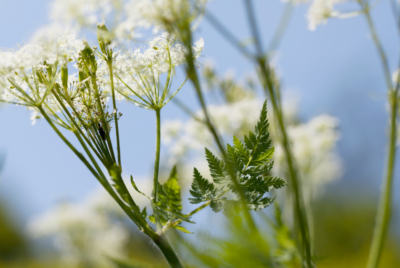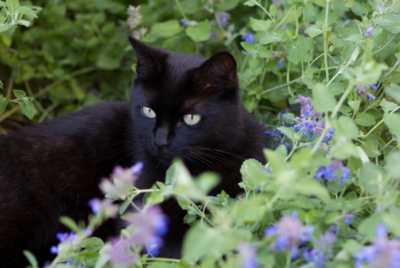English Lavender
English Lavender
1.Introduction to English Lavender
As someone deeply fascinated by the world of plants, I find English lavender to be a symbol of grace, tranquility, and the aromatic essence of the countryside. Lavender, with its enchanting fragrance and vibrant hues, captures the heart of anyone who comes across it. But it’s the English variety that often stands out, thanks to its distinctive charm and versatility. Today, let me take you through a journey of discovery about this beloved plant.
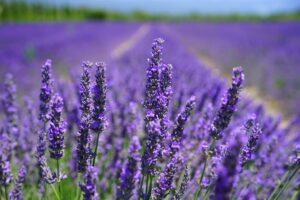
1.1.Overview of Lavender
Lavender with its mesmerizing hues ranging from deep purples to pale lilacs, belongs to the genus Lavandula. This plant is not only celebrated for its captivating beauty but also for its aromatic properties that have been cherished across civilizations for centuries. Lavender’s versatility is evident in its wide range of applications, from therapeutic and medicinal to culinary and decorative. Its ability to thrive in various climates, with over 40 species and numerous hybrids, makes lavender a global favorite, adorning gardens, homes, and fields with its enchanting presence and soothing fragrance.b. Importance of English Lavender
1.2.Importance of English Lavender
English Lavender, or Lavandula angustifolia, holds a place of distinction among the many varieties of lavender. Prized for its sweet, floral aroma and high-quality essential oils, It’s often considered the quintessential lavender for therapeutic use, perfumery, and aromatherapy. Its hardiness and ability to thrive in cooler climates make it a popular choice for gardeners and farmers outside the Mediterranean region. English lavender not only enhances the landscape but also supports biodiversity by attracting bees and other pollinators. Its enduring appeal lies in its beauty, fragrance, and the multitude of benefits it brings to any garden or home.
2.The Beauty and Variety of Lavender
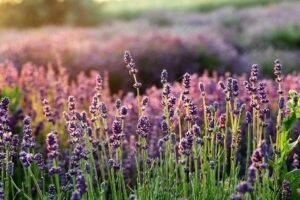
When we talk about lavender, it’s like opening a treasure chest of colors, fragrances, and uses. There are over 40 species of lavender, each with its unique charm. But English lavender, or Lavandula angustifolia, is renowned for its sweet, floral aroma and is considered the gold standard for oils and perfumes. What makes English lavender particularly special is its adaptability in both gardens and homes, offering a piece of serene beauty wherever it grows.
2.1. Different Types of Lavender
Lavender boasts a rich diversity, with over 40 species and countless hybrids offering a wide array of colors, scents, and sizes.
The most common types include English Lavender (Lavandula angustifolia), known for its sweet fragrance; French Lavender (Lavandula stoechas), recognizable by its distinctive butterfly-like petals; and Spanish Lavender (Lavandula latifolia), with its robust, camphor-scented leaves, Bulgarian Lavender.
Each type has adapted to different climates and terrains, showcasing lavender’s versatility. From the drought-resistant Spanish Lavender to the cold-tolerant English Lavender, this genus offers varieties suited for almost any garden setting.
2.2. Unique Characteristics of English Lavender
English Lavender, Lavandula angustifolia, is celebrated for its unique characteristics that distinguish it from other lavender species. Renowned for its delicate, sweet fragrance that is highly sought after in the perfume and aromatherapy industries, English Lavender also produces flowers in a stunning shade of deep violet, which are harvested for both their aesthetic appeal and essential oils. Unlike its counterparts, English Lavender prefers cooler climates and has a compact, bushy growth habit, making it ideal for garden borders and small spaces. Its oil is particularly noted for its therapeutic qualities, including stress relief and insomnia mitigation.
3.Growing Lavender in Harmony
A common question among gardening enthusiasts is whether different types of lavender can be grown together. The answer is a resounding yes! Mixing varieties can create a stunning visual display and a symphony of fragrances. However, it’s crucial to consider their growth requirements – soil type, sunlight, and water needs – to ensure they thrive together harmoniously.
3.1. Can you grow different types of Lavender together?
Yes, you can grow different types of lavender together, creating a garden that’s both visually appealing and fragrantly diverse. When planting various lavender species side by side, it’s essential to consider their individual needs regarding sunlight, water, and soil type. Most lavenders thrive in full sun and well-drained soil, but some varieties may have specific requirements. For example, English Lavender is more tolerant of cooler climates, whereas French and Spanish Lavenders prefer warmer conditions. By accommodating these preferences, gardeners can cultivate a harmonious lavender display that maximizes the beauty and aromatic benefits of these plants.
b. Tips for Successful Cultivation
To ensure the successful cultivation of lavender, consider the following tips:
Sunlight: Lavender thrives in full sun, requiring at least 6 hours of direct sunlight daily.
Soil: Plant in well-drained, slightly alkaline soil. Lavender does not do well in damp or overly fertile soil.
Watering: Water young plants regularly until they are fully established. Mature lavender plants are drought-tolerant, needing minimal watering.
Pruning: Regular pruning helps maintain shape and encourages robust growth. Trim after flowering to prevent woodiness.
Spacing: Ensure proper spacing to promote air circulation, reducing the risk of fungal diseases.
Hardiness: Choose lavender varieties that are suited to your climate zone for the best results. Following these guidelines will help your lavender plants thrive, offering years of beauty and fragrance.
4.The Aromatic World of Lavender
English lavender isn’t just a feast for the eyes; its fragrance is equally captivating. This variety is celebrated for its potent essential oils, widely used in aromatherapy to soothe the mind and body. Its scent is a blend of floral, herbal, and woody tones, making it a favorite in homes for creating a relaxing atmosphere.
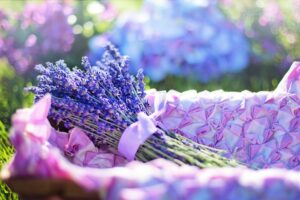
4.1. What Makes English Lavender Special?
English Lavender, or Lavandula angustifolia, holds a revered spot in the lavender family for several compelling reasons. Its distinguishing feature is the exceptional quality of its essential oil, which is preferred for its therapeutic properties, including promoting relaxation and sleep. This variety blooms with dense, vibrant purple spikes that are not only visually stunning but also highly aromatic. English Lavender’s hardiness allows it to thrive in cooler climates, making it more accessible to a wider range of gardeners. Its compact size and elegant form make it ideal for borders, hedges, and container gardening, adding a classic beauty to any landscape.
4.2. Exploring the Fragrance Profile
The fragrance of English Lavender is universally cherished, characterized by a sweet, floral scent with herbaceous undertones that evoke the serene English countryside. This distinct aroma is soothing and calming, making it a favorite for use in aromatherapy to alleviate stress and enhance relaxation. The essential oils derived from English Lavender are also highly valued in the perfume industry for their purity and long-lasting scent. Beyond its therapeutic and cosmetic applications, the fragrance adds a delightful layer to culinary creations, infusing baked goods, teas, and savory dishes with a subtle floral note.
5.Lavender’s Palette of Benefits
Beyond its beauty and scent, English lavender offers a myriad of therapeutic benefits. Its oil is known for its calming and antiseptic properties, making it a staple in natural remedies and skincare. Moreover, lavender’s versatility extends to the culinary world, where its flowers add a unique flavor to dishes and drinks.
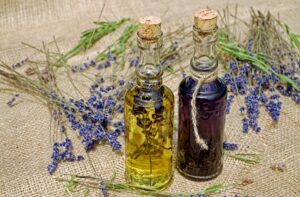
5.1. Therapeutic Properties of English Lavender
English Lavender is renowned for its myriad therapeutic properties, making it a staple in holistic and alternative medicine. Its essential oil is a powerful ally against stress and anxiety, offering a natural way to promote relaxation and improve sleep quality. The antiseptic and anti-inflammatory qualities of English Lavender also make it effective in healing minor burns, cuts, and skin irritations. Additionally, its ability to alleviate symptoms of headaches, including migraines, makes it a versatile natural remedy. These benefits, combined with its soothing scent, make English Lavender a cherished plant for wellness and self-care practices.
5.2. Lavender in Culinary Arts.
In the realm of culinary arts, English Lavender brings a unique and sophisticated flavor to a wide array of dishes. Its sweet, floral essence is perfect for infusing sugars, creating aromatic syrups, and enhancing desserts like cakes, ice creams, and pastries. However, its application isn’t limited to sweets; English Lavender can also add a surprising twist to savory dishes, such as roasted meats, stews, and marinades, offering a hint of the Mediterranean with every bite. Its versatility in the kitchen encourages chefs and home cooks alike to experiment, adding depth and creativity to their culinary creations.
6.Designing with Lavender
English lavender is a landscaper’s dream, offering endless possibilities for garden design. It can create stunning borders, fill spaces with color, and attract pollinators like bees and butterflies. Indoors, dried lavender bundles or potpourri can bring a piece of nature’s tranquility into your home.
6.1.Landscaping
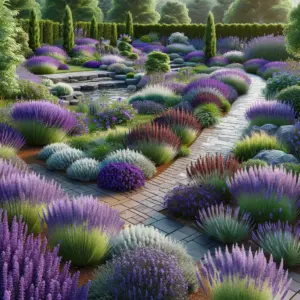
Landscaping with English Lavender transforms outdoor spaces into fragrant, colorful retreats. This versatile plant is perfect for creating low hedges along walkways, where its purple blooms and silver foliage add a stunning visual contrast.
English Lavender thrives in rock gardens, providing texture and color among stone features. It’s also ideal for mass plantings, creating a captivating sea of purple that sways gently in the breeze.
Beyond aesthetics, English Lavender attracts bees and butterflies, promoting biodiversity. Its drought-resistant nature makes it a low-maintenance choice for gardeners looking to add sustainable beauty to their landscapes.
6.2. Indoor Decor Ideas
English Lavender lends a rustic charm and soothing fragrance to indoor spaces, making it a popular choice for home decor. Dried lavender bouquets can bring a touch of elegance to any room, while lavender sachets offer a natural way to freshen closets and drawers. For a more lasting decor, potted
English Lavender can thrive on sunny windowsills, adding greenery and scent to the home. Lavender-themed decor, such as framed prints or lavender-filled vases, can also enhance the aesthetic of a space. Incorporating English Lavender into indoor decor not only beautifies the home but also creates a calming and welcoming atmosphere.
7.Caring for Your Lavender Plants
8.Harvesting and Utilizing Lavender
Harvesting English lavender at the right time – usually when the buds are just about to bloom – maximizes its fragrance and essential oils. This versatile plant can be used in homemade
8.1. Best Practices for Harvesting English Lavender
To maximize the quality and longevity of English Lavender, harvesting should be timed perfectly, usually in the morning after dew has evaporated but before the sun is at its peak. This ensures the essential oils, responsible for fragrance and therapeutic properties, are at their highest concentration. Cut the stems above the first set of leaves to encourage regrowth, selecting stems with buds that have just begun to open. Drying the harvested lavender in a cool, dark place maintains its color and aroma. Following these practices allows you to enjoy the full benefits of this Lavender, from its scent to its soothing properties
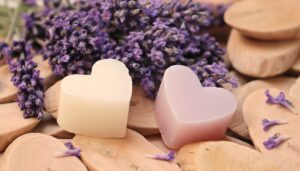
8.2. Lavender Projects
English Lavender offers endless possibilities for creative and practical projects. Lavender sachets are a simple start, providing a natural way to scent drawers and closets.
For those interested in homemade skincare, lavender-infused oils or bath salts can offer calming and therapeutic benefits. Culinary enthusiasts might explore lavender-flavored syrups, sugars, or teas, adding a unique twist to beverages and baked goods. Crafting homemade lavender wreaths or bouquets can also bring a rustic charm to any home decor.
These projects not only make use of English Lavender’s delightful fragrance and aesthetic appeal but also tap into its natural benefits, making them rewarding endeavors for all ages.
9.The Global Influence of English Lavender
9.1. English Lavender Around the World
English Lavender, with its origins deeply rooted in the Mediterranean, has transcended geographical boundaries to become a global favorite. Its adaptability to various climates has allowed it to flourish in gardens and farms across continents, from Europe’s countryside to North America’s backyards.
This widespread cultivation is a testament to its universal appeal, whether for its aromatic properties, therapeutic uses, or simply its beauty. English Lavender’s presence in international botanical gardens and as a staple in global horticulture showcases its enduring popularity and the cultural exchange it facilitates, uniting people through a shared love for this fragrant herb
9.2. Its Role in the Global Market
In the global market, English Lavender plays a significant role in several industries, including cosmetics, aromatherapy, and culinary arts. Its essential oil is highly valued for its quality and therapeutic properties, driving demand in the wellness and beauty sectors. It’s influence extends to the culinary world, where it’s used to flavor dishes and drinks.
Additionally, the plant’s decorative appeal makes it a popular choice for home decor and gardening products. As consumers increasingly seek natural and sustainable options, English Lavender’s market presence expands, highlighting its economic importance and the growing interest in herbal and natural products worldwide.
10.Conclusion
We have explored the various facets of English Lavender, from its therapeutic benefits and culinary uses to its versatility in landscaping and indoor decor. From this it’s clear that this plant holds a special place in both the garden and home. The image crafted showcases the essence of incorporating English Lavender into indoor spaces. Hereby offering inspiration for those looking to bring a touch of nature’s elegance and a soothing atmosphere into their living environment. We’ve explored the vibrant hues of a dried bouquet, the rustic charm of a lavender wreath, the subtle fragrance of lavender sachets, and the natural beauty of a potted plant basking in sunlight. English Lavender enriches our lives with its multifaceted appeal.
In conclusion, English Lavender is much more than just a plant; it’s a symbol of tranquility, a source of natural beauty, and a contributor to well-being. Its ability to transform spaces, elevate culinary creations, and soothe the senses makes it a beloved choice for enthusiasts around the globe. Whether you’re a seasoned gardener, a culinary adventurer, or simply someone seeking to infuse your life with a bit of nature’s magic, English Lavender offers endless possibilities for enrichment and enjoyment.
11.FAQs
1.How many different types of lavender are there?
Botanists identify over 40 species of lavender, along with numerous hybrids and cultivars. These varieties span a wide range of colors, sizes, and growing conditions, making lavender a diverse and versatile plant family.
2. Can English lavender be grown indoors?
Yes, you can grow English lavender indoors. It requires a sunny spot – a south-facing window is ideal – and well-draining soil. Ensure the pot has drainage holes to prevent water from sitting at the roots, which can cause rot.
3. How often should I water my lavender plants?
Water your lavender plants deeply but infrequently. The soil should completely dry out before you water again. For outdoor plants, this might mean once every two weeks or less, depending on your climate. Indoor plants typically require a bit more frequent watering, but always check the soil moisture first.
4. What are the best conditions for growing English lavender?
English lavender thrives in full sun, with at least six hours of direct sunlight daily, and well-drained, slightly alkaline soil. It prefers dry conditions and does not tolerate wet feet or humid environments well. Planting in raised beds or containers can help ensure proper drainage.
5. Can I use English lavender for cooking? What are some suggestions?
Absolutely! English lavender adds a floral, slightly sweet flavor to dishes. Use it sparingly in baked goods like shortbread cookies or scones. It also pairs well with savory dishes such as roasted lamb or chicken. Remember to use culinary-grade lavender to ensure it’s safe for consumption.



